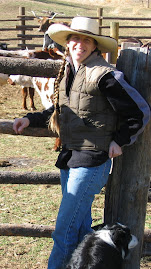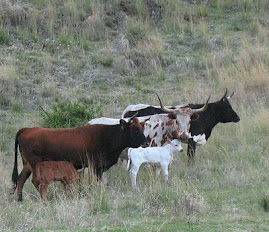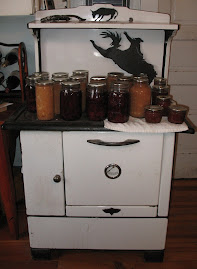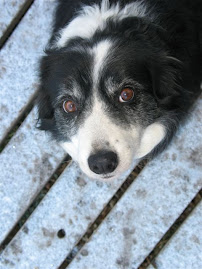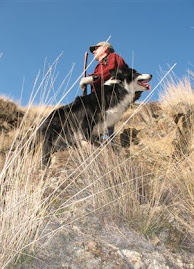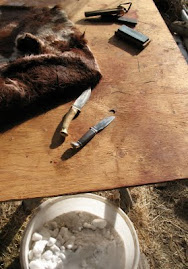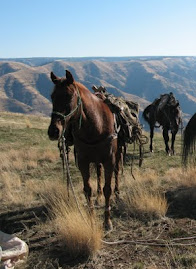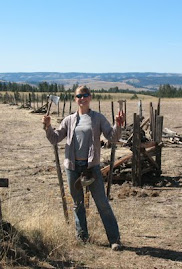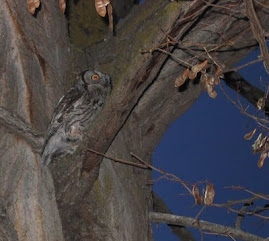 |
| Fuzzy heifer during weaning last year |
I remember when the first snow flurries began to drift down through the big pines out north and hunting season populated the woods with wall tents and campers, the cowboys would be putting in long days gathering cattle from the prairies and timbered ridges. At the Steen Place, the cows and calves were trailed to a big holding pasture along Chesnimnus Creek, each day's gather adding bunches of cattle to the growing herd.
Before long, up to six hundred pairs, mother cows with calves at their sides, would swell the holding pasture, creating a dark tide of animals spread across the golden cured grasslands. When all the cattle were in, we'd herd them into the big corrals, sorting the calves away from the mother cows and turning the cows back into the holding pasture. That's when the bawling began.
Cattle trucks, contracted to haul the calves to sale yards or feedlots, made the long drive across the prairie to the ranch, arriving in the pre-dawn hours, their headlights lined up along the gravel road beyond the corrals. The calves were herded into alleys and up ramps into the cattle trucks, the one ranch job that I always dreaded. By lunch time, the trucks were gone and so were the calves, but the bawling continued.
At night, laying in bed inside the hundred year old log ranch house, I fell asleep to the bawling of the mother cows bunched outside the now empty corrals, and woke up in the morning to more bawling. Each day fewer cows lingered near the corrals, lured by hunger back to the farther reaches of the holding pasture, or perhaps knowing from experience that no amount of bawling would bring back their calves. By the fourth day, the silence typical of wild places returned and the cows were ready to move on.
Here at the Magpie Ranch, we don't sell our calves in the fall, we keep them as part of the herd for more than two years, ranging the canyons and prairies in multi-generational family groups. We do wean the calves when they are around ten months old, by holding them in corrals in the canyon and feeding them hay for a month, while their mothers are free to come and go outside the corrals. The mother cows can see, smell, lick and visit their calves every day if they want to. Once weaned, the calves are turned back into the herd to resume their natural lives and behaviors.
 |
| Cows and calves during weaning |
We are committed to providing our cattle the best life possible. If they are butcher animals, after two years, they are brought in small groups to the home ranch where they are humanely harvested. Listening to the bawling of the neighbor's cattle, I'm thankful we are able to practice ranching the way we do, learning from the past, honoring the future.
From Sara at Magpie Ranch, home of Bunchgrass Beef


